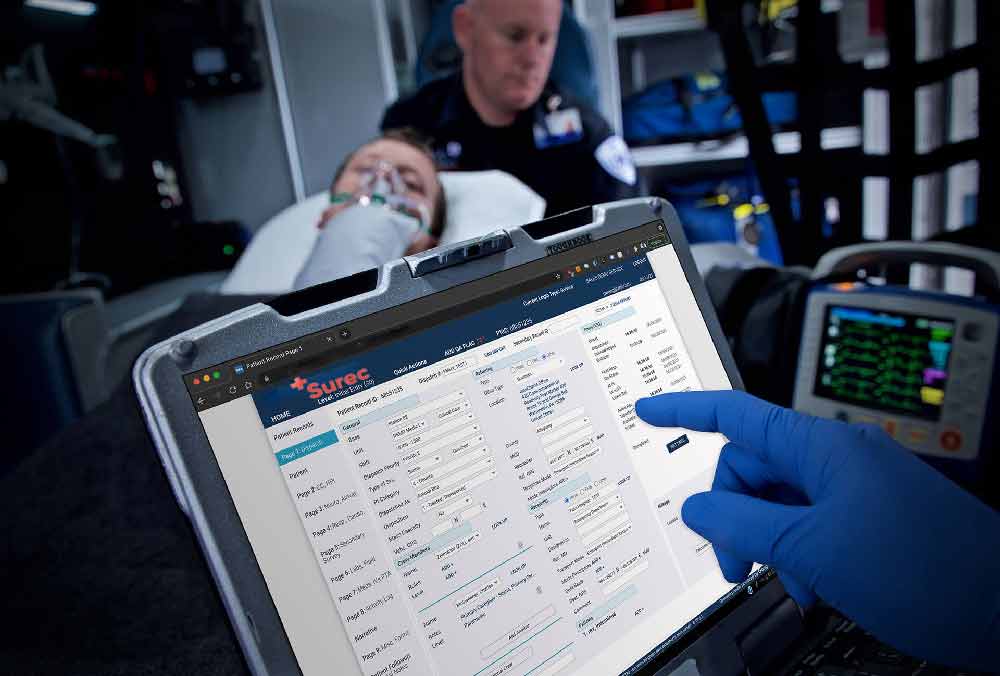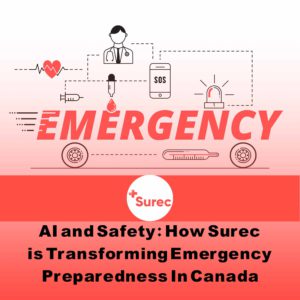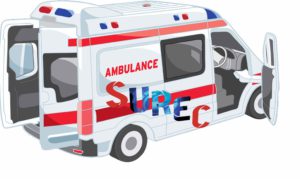Electronic Patient Report Form
The electronic patient care reporting (epcr) of the care given, the patient’s condition, and their medical history is a crucial component of pre-hospital care. Record documentation serves as a tool for data collection of each patient’s health and the care they received.
The main locations make use of the electronic patient report form:
- Clinical
- Legal
- Operational
- Financial
- Compliance
Critical Areas of Documentation
- Demographic Information
- Date and Time of Transport
- Reason for transport (patient complaints/conditions)
- Indications of emergency vs. non-emergency responses
- A detailed account of the ambulance staff’s evaluation of the patient and the care/services they provided in chronological order
- Patient’s related medical history (if pertinent)
- Names, positions held by, and signatures of ambulance workers;
- Number of loaded miles
- Itemized list of specialized services and/or supplies
In detail, the emergency personnel adds electronic patient care reporting (ePCR) as a medical record that is permanently in the patient’s file. Significantly, in situations when liability or malpractice concerns come up, it is also regarded as a legal document. It serves as the foundation for all medical billing claims. The billing also office views the documentation directly to appropriately file insurance claims. When a car accident occurs, for instance, these reports may use by lawyers with the appropriate patient authorization signatures.
In any event, the reports will be sent to the appropriate third-party insurance company in the case of an insurance audit or as a requirement upon the initial claim filing for some insurers. Not to mention legal professionals advise that the company keeps these records for up to 7 years.
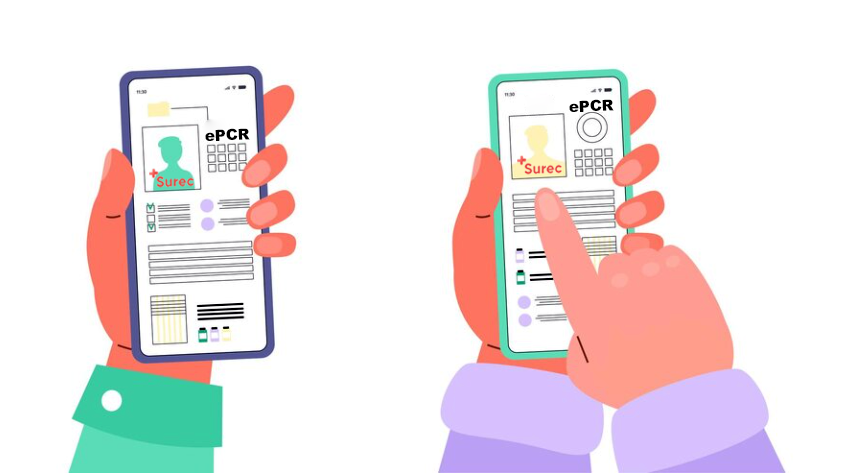
Patient invoices
The field personnel should try to get insurance information while on the job, either from the patient or their family members or by requesting a hospital face sheet at the final destination. As long as the information in patient records system is required for payment, the hospital is permitted to communicate it under HIPAA’s restrictions. If it’s required for operations, payment, or treatment, HIPAA permits the transmission of information (TPO).
If insurance information is not immediately available, EMSMC will make a reasonable effort to locate insurance coverage.
A statement and a bill will be provided to the patient if insurance coverage cannot be confirmed.
In the absence of insurance coverage, as well as for claims involving patient coinsurance, if there is a deductible or a service that the insurance company cannot cover, EMSMC will try in good faith. As required by federal law, to recover the debt owing. Following this sincere effort, the customer will decide on specific collection strategies, which can involve using a collection agency, introduction to a program to pay off debt, etc.
Type of Response
The first transport by ambulance is often only covered in cases where the patient’s condition makes any other mode of transportation unsafe for them. When a patient needs fast access to emergency medical care due to an accident, an acute disease, or an injury, the personnel of emergency have to use emergency transportation.
According to Medicare, an emergency response is defined as an immediate response to a 911 call or its equivalent in locations lacking a 911 call system at the BLS or ALS level of service. An instant response is when the EMS provider starts taking the appropriate actions to address the call as soon as possible. Moreover, medically necessary transportation for the client to receive quick medical care is what Medicaid classifies as emergency transport.
On the other hand, non-emergency service, such as visits to nursing homes, health centers, and the patient’s home, is only covered in cases when taking another route could put the patient’s safety or health at risk. In that case, the government agency Centers for Medicare & Medicaid Services (CMS), which oversees the Medicare and Medicaid programs, defines the phrase “bed-confined” as follows:
• Inability to ambulate
• Inability to sit in a wheelchair
Therefore, the phrase “non-ambulatory” does not mean “bed-confined,” but rather that the patient is unable to ambulate without help.
The expression “stretcher bound” implies. That means the patient can only carries by stretcher. For that reason, any other mode of transportation could risk or injure the patient, or would put the patient’s health in danger. Above all, it is important to record the patient’s medical status, including any relevant past medical history while describing the patient as stretcher bound or bed-confined.
Medical Condition Codes in writing EPCR
In general, the emergency team provides a list of medical condition codes, writes in the mobile app in the section of electronic patient care reporting (epcr) and also converts to voice and picture to send the doctors in real-time. In fact, the artificial intelligence in smartphone app (Surec) is of the ability to collects key phrases, and assigns a severity to any key phrase. For the Medical Condition Code to be applicable, the documentation must include more detailed information on the patient’s signs and symptoms. After that, images of EKG and the patient’s condition will be automatically sent to the doctors through the mobile application.
How to Create a Time and Money-Saving PCR
- Be brief but accurate.
Be specific in your description of what transpired and incorporate the thought process. When you first arrive on the scene, describe what you notice. Similarly, check how is the patient’s condition? Utilize quotations when necessary. Although the narrative does not have the only intention of proving medical necessity, it must be an accurate, factual assessment. At last, a billing specialist can review in light of the medical necessity standards specific to their organization. This becomes certainly simpler the more information you incorporate into your decision-making process. - Clearly and objectively state the facts.
Ensure that PCR includes details such as patient statements, a description of the environment, and medical observations. Make sure the report includes treatment and transportation choices. In addition, organize the narratives consistently that contains crucial information. - Get rid of bad language and other errors.
Firstly, an improper acronym or spelling mistake could potentially change the narrative’s meaning or cause unwanted confusion. Most importantly, always double-check your writing, ask a teammate to read it over. Some of the best ePCR software available offers “progressive functionality” in forms, recognizing problems as the provider enters data.Surec as the most intelligent teammate can be with you. This helps resolve potential inaccuracies.
Clearly, it is important to realize that you avoid making any jokes or offensive remarks. In brief, this form might be used in court at some point and whatever you say there could be used against you.
Establish best practices for documentation terminology for your electronic care reporting (ePCR).
Software with drop-down choices, online database access, and industry codes can further aid in ensuring that reporting uses uniform terminology. Always get the appropriate confirmations of the ambulance services rendered. Some ePCR software features customizable fields and forms that assist your staff in completing the precise paperwork that is most crucial to your agency.
what is Surec role in completing electronic patient care reporting(ePCR)?
Surec customers are emergency section of hospitals, and the medical emergency teams. For example, ambulances, first responders, and paramedics as well as private medical emergency companies would aim to use Surec’s services for insurance reporting. To clarify, the mobile application securely transfers the patient data to a HIPAA (Health Insurance Portability and Accountability Act) compliant cloud storage where the emergency room personnel may access it. During the calls, the collected data use for training purposes and educational videos for many hospital staff. In other words, the ambulance team with the help of intelligent assitent (Surec) start filling electronic patient care reporting (epcr) in.
Furtheremore, our platform will reduce medical expenses paid by the insurance providers. On the other hand, our software product will make hospitals’ performance in emergencies much more efficient and streamlined, reducing the hospitals and insurance compenies’ overall cost.
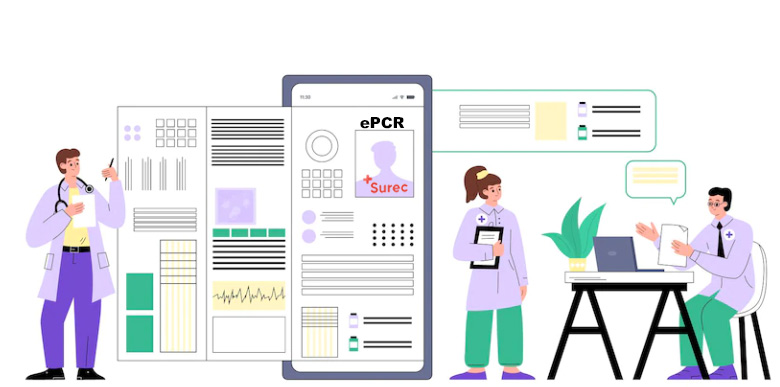
Don’t fall victim to human error. With the adoption of artificial intelligence in Surec app, ambulance team can provide an precise electronic patient care reporting (epcr) .
Surec is a comprehensive platform that uses Artificial Intelligence to write electronic patient care reporting. It also improve diagnostic accuracy so that it can reduce the need for human involvement in filling in ePCR during emergency medical care.
This state-of-the-art technology offers a new approach to providing the most accurate and up-to-date patient information in writing electronic patient care reporting (epcr). It saves the tremendous amounts of people’s lives in an emergency.

